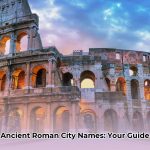Ever wonder what makes a picture of Jesus really special? Orthodox icons aren’t just pretty paintings; they’re powerful windows into faith, telling stories across centuries and cultures. This isn’t just about art; it’s about understanding how artists have captured the essence of Jesus through colors, poses, and even the smallest details. We’ll explore how these icons have evolved, what each element means spiritually, and how to appreciate the artistry and the deep faith behind each brushstroke. Discover the history and symbolism hidden within these timeless images of Jesus. For more on Jesus’ life, see the Jesus Bible.
The Enduring Appeal of Jesus Icons: Faith, Art, and Timeless Stories
Have you ever stopped to really look at an icon of Jesus? It’s more than just a visual representation; it’s a gateway into centuries of faith, artistic mastery, and evolving beliefs. These images aren’t static; their style and meaning have shifted over time, reflecting changes in culture and spiritual understanding, while also retaining powerful symbols that continue to resonate. The consistent use of dark hair, brown eyes, and an olive complexion is a shared visual language across diverse cultures.
Visual Consistency and Shared Representations of Jesus
If you’ve encountered several icons of Jesus, you’ve likely noticed recurring features. Dark hair, brown eyes, and an olive complexion are common, suggesting a broadly accepted image of Jesus. This visual consistency across cultures and centuries is significant. The manner in which Jesus is depicted looking at the viewer is also important. A direct gaze can suggest authority, while a softer look might communicate gentleness or compassion, depending on the specific icon and the artist’s intent. Color is another vital element. Blue, often linked to divinity, and red, representing humanity and sacrifice, are frequently used. This shared use of colors and facial features creates a profound sense of connection across artistic traditions.
Diversity in Styles: Exploring Regional and Theological Perspectives
While similarities exist, the variety in depictions of Jesus is striking. He’s sometimes depicted as a young man, emphasizing his humanity. Other times, he’s majestic and divine, even as an infant. Different artistic traditions—like the Byzantine style from Eastern Europe or the Russian approach—add their own unique regional characteristics. This isn’t merely aesthetic; it reveals differing theological perspectives and cultural influences. The level of realism in an icon affects its message. A stylized, symbolic image can feel spiritually potent, and the Byzantine style, with its stylized features, became a standard influencing art across Eastern Orthodox Christianity. Explore the Coptic, Greek, and other traditions to uncover further variations.
The Spiritual Practice of Icon Creation: More Than Just Painting
Creating an Orthodox icon of Jesus is a deeply spiritual act, not just painting. Skilled artists imbue their work with theological knowledge, adhering to established rules and traditions. Every detail is crucial – from the use of gold leaf to the precise choice of colors and the deliberate avoidance of perspective and shading – all contributing to the icon’s spiritual purpose. It’s not simply a picture; it’s a prayer, expressed in paint and gold. This meticulous process emphasizes that icons are sacred objects intended to facilitate a connection with the divine.
Modern Interpretations: Balancing Tradition and Contemporary Vision
Contemporary artists face the challenge of honoring tradition while expressing their vision. This balance between preserving the past and embracing creativity leads to discussions about what makes an icon “authentic” or “faithful.” The ongoing debate and artistic exploration testify to the enduring power of these images, ensuring the tradition remains relevant and responsive to contemporary society. Consider the work of contemporary iconographers who incorporate modern materials or address contemporary social issues within the traditional framework.
Decoding Iconography: Unpacking Symbolism and Visual Language
Delving deeper into the symbolism:
| Feature | Possible Meanings | Examples and Variations |
|---|---|---|
| Gaze | Authority, peace, compassion, judgment, love | A direct, intense gaze can convey authority or judgment, while a gentle, downward glance might suggest humility or compassion. |
| Hair Color | Often dark brown, suggesting his human nature | Variations in shade can suggest different moods or ages. Lighter shades might emphasize purity, while darker shades underscore a connection to the earth. |
| Robe Color | Blue (divine), red (humanity, sacrifice), purple (royalty) | Combinations and intensities vary. A deep, rich blue can signify the infinite nature of God, while a brighter blue might represent hope. |
| Facial Features | Youthful (humanity), mature (divinity), suffering (passion) | Different artists emphasize features. A serene expression indicates peace, while furrowed brows and downturned mouths depict the suffering of the Passion. |
| Background | Often gold, symbolizing heaven; other elements may tell a story | Detailed backgrounds offer insights. Landscapes can represent specific biblical locations, while architectural elements recall important events. |
Each icon is an opportunity for study and reflection, connecting us across time and cultures and offering a timeless link to our faith. Research into iconography is ongoing 1, and interpretations of symbolism may evolve as scholars study diverse works.
How to Identify Different Theological Interpretations in Orthodox Jesus Christ Icons
Embark on a visual exploration of faith. Orthodox icons are theological statements, communicating beliefs in colors and gestures. Decipher these visual sermons to journey into Orthodox Christianity. How do you identify different theological interpretations in Orthodox Jesus Christ icons?
Unveiling the Divine: Evolution and Theological Dimensions
The depiction of Jesus in Orthodox icons has evolved, reflecting artistic styles and theological understandings. Early icons, austere and frontal, emphasized Christ’s majesty. Later depictions might showcase his human compassion, emphasizing his ministry. Consider the gaze – a direct stare conveys authority, while a softer gaze suggests gentleness and love, revealing different theological focuses.
The Visual Vocabulary: Colors and Symbolic Representations
Color is key, serving as the icon’s vocabulary. Gold signifies divinity, illuminating Christ’s sacred nature. Deep blues and greens represent humanity, acknowledging Christ’s earthly existence. The combination—gold halo atop a human-like figure—declares the paradox of the Incarnation: fully God, fully man. Red represents the Holy Spirit, sacrifice, and divine love, with usage varying by context.
Interpreting Composition and Symbolic Gestures
Consider the context. Is Jesus portrayed as the Pantocrator (Almighty), the Teacher, or the Suffering Servant? Each communicates a message. The Pantocrator, with his stern gaze and raised hand, asserts authority. The suffering Christ emphasizes sacrifice and empathy. The halo carries symbolic weight, and variations add meaning. Understand variations to appreciate theological nuances.
Deciphering Composition and Expressive Gestures
The icon’s composition and Jesus’ gesture hold significance. Is he depicted centrally, dominating the space to emphasize his supreme authority? Or is he interacting with others, demonstrating his compassionate nature? Placement and positioning are central to the message. Hand positions – outstretched in blessing or holding a scroll – impart aspects of his message.
By paying attention to visual cues, we understand the beliefs woven into sacred images. What insights are gleaned from analyzing the historical context of an icon’s creation?
Understanding Orthodox Jesus Christ Icons: Key Aspects and Symbolic Meanings
- Orthodox icons are visual theological statements.
- The depiction of Jesus varies across time, reflecting evolving theological understanding.
- Color, symbols, composition, and gesture contribute to the icon’s message.
- Paying attention to details reveals theological interpretations.
- Studying icons offers insights into Orthodox faith.
Cultural Adaptation: The Evolution of Jesus Christ Iconography Across Diverse Cultural Contexts
Key Takeaways:
- Early depictions of Jesus were largely symbolic, reflecting the Jewish aversion to graven images.
- Greco-Roman artistic styles profoundly impacted later representations.
- The image of Jesus diversified across cultures, reflecting local ethnicities and values.
- The Evolution of Jesus Christ Iconography Across Diverse Cultural Contexts is evident in the shift from symbolic to increasingly realistic portrayals.
- Modern interpretations often incorporate social and political commentary.
- The ongoing debate about representation necessitates sensitive consideration of cultural appropriation.
The Transition from Symbolic to Depiction: Early Christian Art
Early Christian art often uses symbols instead of literal images due to Jewish traditions discouraging idols. Early Christians, many from Jewish backgrounds, initially expressed faith through symbolic representations—a lamb for Jesus, the good shepherd, or the dove for the Holy Spirit. This symbolic language served as a powerful means of expressing faith without violating cultural sensitivities.









